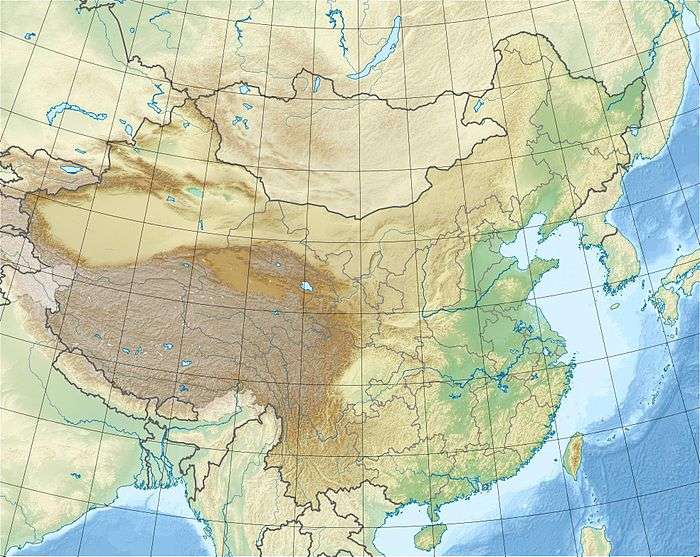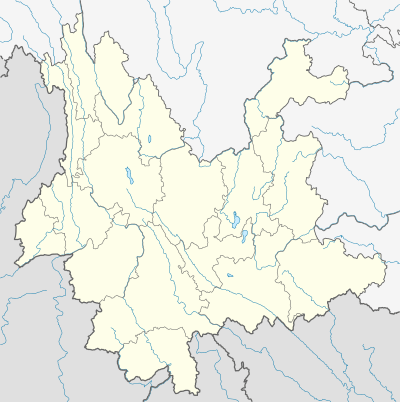Fengjiahe Formation
The Fengjiahe Formation is a geological formation in China. It dates back to the Early Jurassic.[1] The formation is up to 1500 metres thick and consists of "purple-red mudstone and argillaceous siltstone interbedded with gray-green and yellow-green quartz sandstone and feldspathic quartz sandstone"[2]
| Fengjiahe Formation Stratigraphic range: Hettangian | |
|---|---|
| Type | Geological formation |
| Underlies | Zhanghe Formation |
| Overlies | Shezi Formation |
| Thickness | Up to 1,500 m (4,900 ft) |
| Lithology | |
| Primary | Mudstone, siltstone |
| Other | Sandstone |
| Location | |
| Coordinates | 24.7°N 101.6°E |
| Approximate paleocoordinates | 32.7°N 99.8°E |
| Region | Yunnan |
| Country | |
| Extent | Yimen Basin |
 Fengjiahe Formation (China)  Fengjiahe Formation (Yunnan) | |
Fossil content
Theropod tracks geographically present in Yunnan, China.[1]
| Vertebrates | ||||||
|---|---|---|---|---|---|---|
| Genus | Species | Location | Stratigraphic position | Material | Notes | Images |
|
Chinshakiangosaurus chunghoensis[1] |
Later found to be indeterminate sauropod remains.[1] |
|||||
|
S. anlongbaoensis |
Lower part of formation |
Partial skull with lower jaw |
A crested basal theropod, probably a junior synonym of Sinosaurus. | |||
|
Y. youngi[1] |
"[Ten] partial skeletons, skull, adult."[3] |
|||||
| Lufengosaurus[2] | L. huenei | |||||
gollark: ++exec```pythonprint("aaaaaaaaa")print("bbbbbbbbbbbbbb")```
gollark: ++exec```pythonprint("aaaaaaaaa")print("bbbbbbbbbbbbbb")```
gollark: Wait, that should work *too*. Weird.
gollark: I shall have to update the regexeges.
gollark: ```bf++++++```
See also
- List of dinosaur-bearing rock formations
References
- Weishampel, David B; et al. (2004). "Dinosaur distribution (Early Jurassic, Asia)." In: Weishampel, David B.; Dodson, Peter; and Osmólska, Halszka (eds.): The Dinosauria, 2nd, Berkeley: University of California Press. Pp. 534–535. ISBN 0-520-24209-2.
- Xing, Lida; Rothschild, Bruce M.; Randolph-Quinney, Patrick S.; Wang, Yi; Parkinson, Alexander H.; Ran, Hao (December 2018). "Possible bite-induced abscess and osteomyelitis in Lufengosaurus (Dinosauria: sauropodomorph) from the Lower Jurassic of the Yimen Basin, China". Scientific Reports. 8 (1): 5045. doi:10.1038/s41598-018-23451-x. ISSN 2045-2322. PMC 5864883. PMID 29568005.
- "Table 12.1," in Weishampel, et al. (2004). Page 236.
This article is issued from Wikipedia. The text is licensed under Creative Commons - Attribution - Sharealike. Additional terms may apply for the media files.